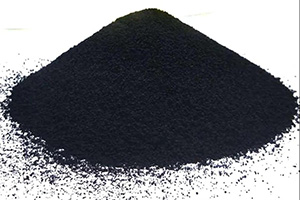Chlorine vs. Chloramines
More and more frequently, municipalities are converting to chloramines for disinfection rather than free chlorine, at least during the summer months. The reason for this conversion is that chloramines are more stable, so they are not consumed as quickly and therefore last longer in the city’s distribution system as a disinfectant. One of the drivers for this conversion is that chloramines reduce the likelihood of forming trihalomethanes (THMs), which are potential carcinogens caused by the interaction of chlorine with organic contaminants in the water. Chloramines are formed by reacting chlorine with ammonia, so the result of injecting chloramines may create a slightly higher pH in the water as well.
What does this mean for your process water system? If you’re operating an ion exchange system or reverse osmosis system, you already understand the negative impact that chlorine can have on your membranes and/or resins. But how can you adapt for the use of chloramines in the feedwater to your system? Chloramine removal is affected by water temperature, contact time, and feedwater pH.
If you’re injecting sodium bisulfite for dechlorination, the injection point should be evaluated to ensure that there is sufficient reaction time for the bisulfite to neutralize the chlorine component. In many cases, the injection point can be relocated further upstream to permit sufficient time for the reaction to occur prior to contact with the membranes or resins.
If you’re using activated carbon filtration for dechlorination, be aware that removal of chloramines requires additional contact time with the carbon media for adsorption of the chloramine, compared to free chlorine. The flow rates per cubic foot of carbon media should be evaluated to determine whether sufficient contact time is available. Chloramines also consume more of the carbon’s adsorption capacity, so you may want to re-evaluate your carbon media and/or the frequency of rebedding the filter. If you’re using a conventional carbon media (coal-based or coconut shell), you are likely finding that chlorine breakthrough is occurring sooner than it was when the city was using chlorine. You can replace the carbon more frequently, or you can consider using catalytic carbon instead.
Catalytic carbon is created by modifying the surface structure of standard grades of carbon through processing with gas at high temperatures. The resulting product accelerates chemical reaction times; in existing equipment, it provides more complete removal of the chlorine component at the same flow rates; for new equipment, it can mean less carbon and smaller equipment than if a conventional carbon product is used. If you choose to design around conventional carbon, be sure that the equipment is sized to provide sufficient contact time for complete dechlorination. And regardless of your dechlorination process, be sure that you are measuring total chlorine rather than free chlorine!
For further information or assistance in evaluating your carbon filters’ ability to remove chloramines, please contact your Process Solutions, Inc. sales representative!

Catalytic activated carbon is effective in removing chloramines from water.

If your city uses chloramines, be sure you’re measuring for Total Chlorine rather than Free Chlorine.